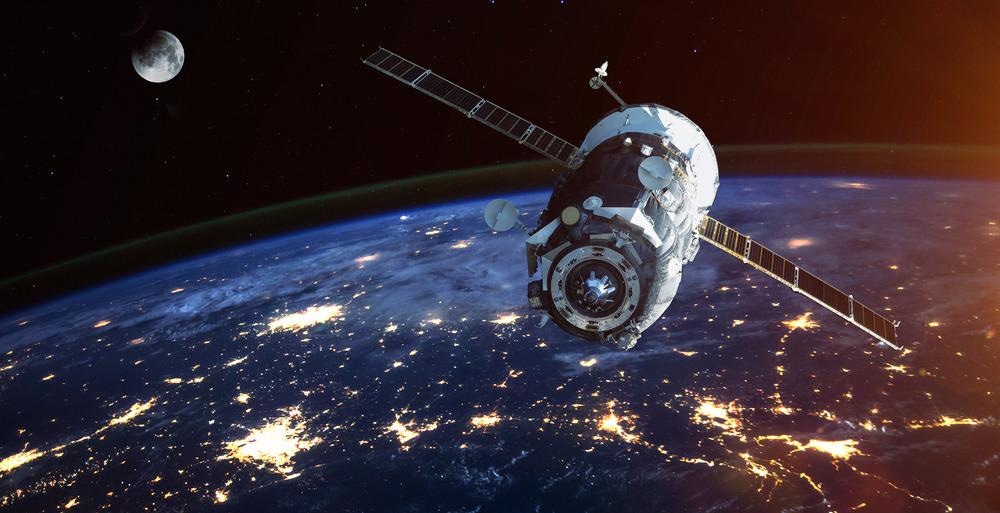Connectivity in space is basic by Earth standards. Satellites cannot get a 4G signal in orbit, and that results in a data bottleneck back to the ground. To help solve this problem, the University of Western Australia just installed a half-ton telescope that shoots giant laser beams into space on the roof of its physics building.

Image Credit: Vadim Sadovski/Shutterstock.com
The First Space Laser Optical Ground Station in the Southern Hemisphere
The new Western Australian Optical Ground Station (WAOGS) is the first space laser optical ground station in the southern hemisphere. The optical station may receive high-definition footage from astronauts walking on the moon as part of the next lunar mission, Artemis Orion in 2024.
WAOGS is part of a new generation of space communications using lasers to tackle the data bottleneck in orbit. Every year, more is being asked of satellite communications in terms of data transfer. But current infrastructure struggles to keep up. The optical ground satellite systems being introduced are the building blocks for the future of high-speed space communication.
No 4G in Space
Fiber-optic broadband, 4G, and even 5G connectivity enable data-hungry activities such as live video streaming and online gaming that are a commonplace, daily technological marvel for consumers worldwide today.
But this level of connectivity does not exist in space, where satellites are still using technology from the dial-up internet era of the 1990s. Satellites transmit data using radio frequency (RF) technology that has scarcely developed since Neil Armstrong first walked on the moon in 1969.
Satellite Communications Cannot Supply Current Demand
Despite this, we use satellites extensively to make the modern world work. Communications, weather forecasting, crop monitoring, digital mapping and geodata, disaster and emergency response, wildfire monitoring, climate monitoring, and a range of other applications all rely on satellites and their outdated communications technology to work.
The data bottleneck that all this activity causes is only getting worse. More satellites and constellations of nanosatellites are launched every year, with telecommunications companies entering the space race in earnest since early 2003.
Back on Earth, our demands for satellites communications and data keep increasing. High-definition video streaming, multiple device connectivity, and remote connectivity are all in rising demand worldwide with bigger technology markets than ever before. Like cameras, sensors continue to improve – with the file size of their outputs growing accordingly. Satellites’ small bandwidth struggle to cope.
Lasers for Satellite Communication
Using laser connectivity instead of RF technology could significantly improve data transfer speeds while also improving communication security. Radio waves and light are both electromagnetic radiation with different wave frequencies. Laser waves, with their higher frequencies of electromagnetic radiation, can transmit more information per second than radio waves.
Satellites with laser transmitters onboard can downlink data to Earth tens of thousands of times faster than satellites with radio transmitters.
Laser transmitters are also smaller and lighter than radio transmitters. This reduces the cost of launching them into space, where every extra gram represents hundreds of dollars of extra fuel to break the gravity barrier.
Unlike radio waves, lasers can be precisely pointed at a ground receiver due to their emitted energy being more directional. This will enable multiple spacecraft to transmit on the same frequency without interfering with each other, as often happens with RF-equipped craft.
The security benefits of laser-based connections are also particularly interesting to communications providers. Data transmitted in a directional laser beam is much harder to intercept than data transmitted on a radio frequency.
The Next Generation of Space Communication
If laser link communications can be established, then super-fast internet broadcast from space will be available anywhere on Earth. You will be able to get a 5G signal in the middle of the Pacific Ocean.
Light travels faster through the vacuum of space than it does through a fiber optic cable, so data going via satellites gets between points on Earth a few picoseconds faster than data going underground and along the sea bed.
Optical ground stations such as WAOGS will be placed around the world to link up the ultra-fast space internet at continental junctions with the internet reaching people’s homes and businesses.
WAOGS is the first in a network of four ground stations planned for Western Australia, South Australia, the Australian Capital Territory, and New Zealand in the next few years.
The Australian and New Zealand Optical Ground Satellite Network (AOGSN) intends to form the foundational infrastructure of high-speed internet communications in Australia and New Zealand.
References and Further Reading
Gozzard, D. (2021) Australia installs first space laser optical ground station in southern hemisphere. ABC Australia. Available at: https://www.abc.net.au/news/science/2021-09-12/australias-first-space-laser-communications-installed-wa/100406742
Howell, E. (2021) NASA prepares 1st moonbound Orion spacecraft to receive its launch abort system. Space.com. Available at: https://www.space.com/orion-capsule-prepares-for-launch-abort-system
Disclaimer: The views expressed here are those of the author expressed in their private capacity and do not necessarily represent the views of AZoM.com Limited T/A AZoNetwork the owner and operator of this website. This disclaimer forms part of the Terms and conditions of use of this website.